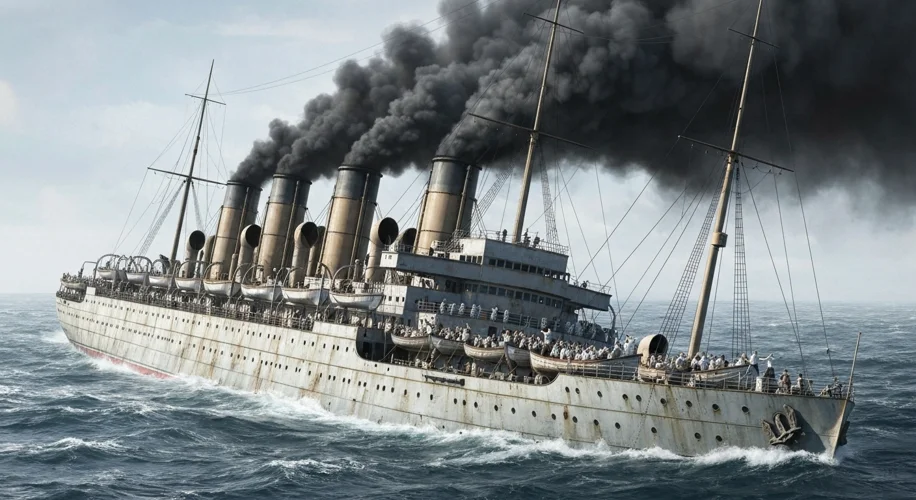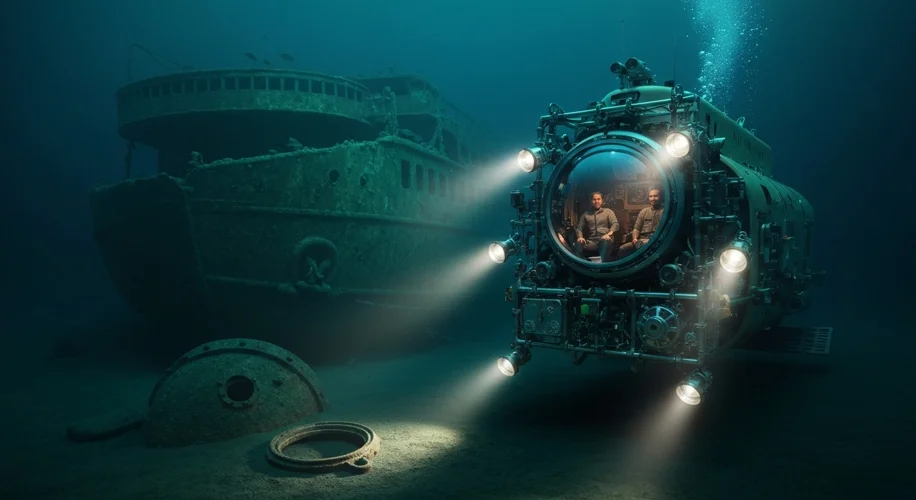The year is 1916. The world is engulfed in the fires of the Great War, and amidst the chaos, a new leviathan of the sea, the HMHS Britannic, was embarking on its fateful journey. Sister ship to the ill-fated Titanic and Olympic, the Britannic was a marvel of Edwardian engineering, destined not for luxury voyages, but for service as a hospital ship.
Commissioned by the White Star Line, the Britannic was designed with the latest safety features, a testament to the lessons learned from the Titanic’s catastrophic maiden voyage just a few years prior. Its hull was wider, its watertight compartments more numerous, and it boasted double-bottomed construction. Yet, fate, it seemed, had other plans for this titan of the sea.
On November 21, 1916, under the command of Captain Charles Bartlett, the Britannic sailed from the Greek island of Kea. The Aegean Sea, usually a serene backdrop, was a cauldron of wartime activity. Just hours into its voyage, a sudden, violent tremor rocked the massive vessel. The cause? A German mine, lurking beneath the placid surface, detonated with devastating force.

The explosion tore a gaping wound in the ship’s hull, but the Britannic, a symbol of resilience, did not immediately succumb. Captain Bartlett, a seasoned mariner who had also captained the Olympic, fought valiantly to keep the ship afloat. He ordered watertight doors closed and attempted to steer the wounded giant towards the nearby island of Kea. However, the damage was too severe. Water poured into the forward compartments at an alarming rate.
The scene aboard the Britannic was one of controlled panic. Nurses, doctors, and wounded soldiers, all aboard for the ship’s mission of mercy, were evacuated. Lifeboats, some of them tragically still empty, were lowered into the churning waters. The proud liner began to list dramatically, its massive structure groaning under the immense strain. The ship’s final moments were a testament to its grand design, settling slowly by the bow, almost gracefully, before disappearing beneath the waves.
Remarkably, only 30 lives were lost in the sinking, a stark contrast to the Titanic’s devastating loss of over 1,500 souls. The surviving crew and personnel were rescued by nearby vessels, their ordeal a chilling reminder of the ever-present dangers of wartime at sea.
For decades, the Britannic lay in its watery grave, a silent monument to a lost era. Then, in 1975, the legendary Jacques Cousteau, aboard his research vessel Calypso, located the wreck. Further expeditions, including one in 2009 led by Cousteau’s son Pierre-Yves Cousteau, brought the ship back into the public consciousness.
Today, the wreck of the Britannic lies at a depth of approximately 120 meters (390 feet) off the coast of the Greek island of Kea. It remains remarkably intact, a hauntingly preserved snapshot of its final moments. Recent news, as of September 17, 2025, highlights the first objects retrieved from the wreck, bringing tangible pieces of this maritime tragedy back to the surface. These artifacts, carefully recovered, offer a poignant connection to the lives aboard the ill-fated vessel and the historical context of its demise.
The story of the Britannic is a somber chapter in the grand saga of maritime history. It is a tale of advanced engineering, the brutal realities of war, and the enduring mysteries that lie beneath the ocean’s surface. The retrieval of these first objects serves as a powerful reminder that even in the depths of the sea, history continues to reveal its secrets, allowing us to touch, in a very real way, the echoes of the past.

